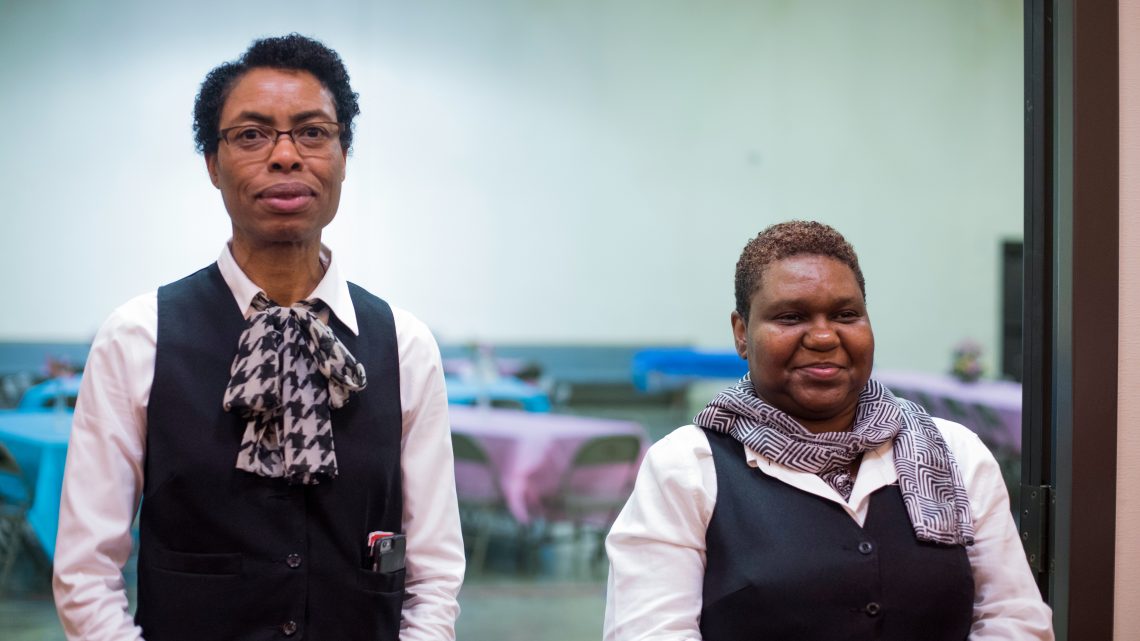About 15 miles due North by Northwest of the Gateway Arch in St. Louis there is a church by a busy road. The sign advertising the large, brown building’s presence reads
“BIBLE BASED
POWERHOUSE PREACHING
EVERY SAT 11 AM
WED 7 PM”
Sabbath School doesn’t start for another fifteen minutes but cars are already filling up parking spots and the greeters stand by at the entrance (there is a greeter at this post until after the church closes six hours later).
Northside Seventh-day Adventist Church’s hospitality is poured on to every guest and member. Entering the lobby one can expect an average of 10 handshakes and hugs, never from the same person twice.
Elder Kenneth Howard is in charge of operations today. The pastor is out-of-town, wearing one of the many hats required of his profession. Elder Howard quickly adds his handshake and hug to the 10 and explains the program. Sabbath School starts in earnest, groups forming in lively discussion. Children who also attend the attached elementary school during the week are inspecting their spring project: newly hatched chicks, chirping, announcing their hunger.
Once divine worship begins, there is an almost uninterrupted piano background. The choir pulls out all the stops, their energetic and emotional singing paving the way for the sermon. This Sabbath, the message requires pen and paper for there are plenty of statistics about trends in Christianity lately.
The message turns from dire to hopeful, though. Calls to building a stronger community within and outside the church walls are met with praise.
The Northside Church wouldn’t be the first church one would think needs the “build community” message. From the moment you walk in you are met like family, quickly invited to stay for the fellowship meal after the service.
The church seems a little empty today. “The youth are in Kansas City training with other YA youth leaders from across the Central States Conference,” elder Howard explains. “The church is much more lively when they’re around.”
Not that church isn’t lively already.
There is a real emphasis on youth. A youth elder is nominated and serves on the elders’ committee at least once a month. Community rallies involving service trips, Pathfinder and drumline parades and sports across the city are commonplace. The children’s choir visits the nursing home often, a favorite of the residents there.
The church is itself preoccupied at what a healthy church is, and identified five key points that denote a healthy community of believers.
1. Vibrant Worship
2. Concern for our lost
3. Fellowship
4. Vision
5. Connectivity to God
The church identifies individuals that have not been attending recently, and assigns visits and follow-up fellowship to members to contact the individual. This is an ongoing project.
“Lost” doesn’t always mean those who have fallen by the wayside, so to speak. In the bulletin, a special section with contact information for shut-ins and sick members is included so that the members can reach out to them.
“This isn’t just for their benefit, it helps us. If you visit them, you will leave feeling good,” explains Howard. “It is better for you, as the visitor, as you see how they minister to you.”
“Pastor Belcher hasn’t been here a long time,” says Howard. “2017 was his first full year with us. This April, he will share his vision with us.” The whole church is involved in the pastor’s vision casting.
In fact, at the beginning of the service, the whole church repeats the mission statement in unison. “It helps us stay focused on the mission and vision, that we’re here not just as a church inside, but as a church inside and outside. There is a lot of pain that goes on in the community and we need to be there for the people who are hurting,” he explains.
At community fests, the church sets up booths with “needs” that the community needs met, including food, prayer booths and game stations where the community can interact with church members. “We want them to know that any need they have will be met with us, that we are here for them.”
According to elder Howard, the church operates under the belief that everything they need to move forward they have under their faith. This helps foster unity, as any project they undertake is shared with the larger congregation.
What gives Howard hope for the future is the congregation family’s active disposition. He loves how almost everyone who arrives gets involved in an active role after some time with the congregation, no matter how far back they sat when they first joined.
“The church was built thinking about family,” he says, with a smile. “This is a family.”









